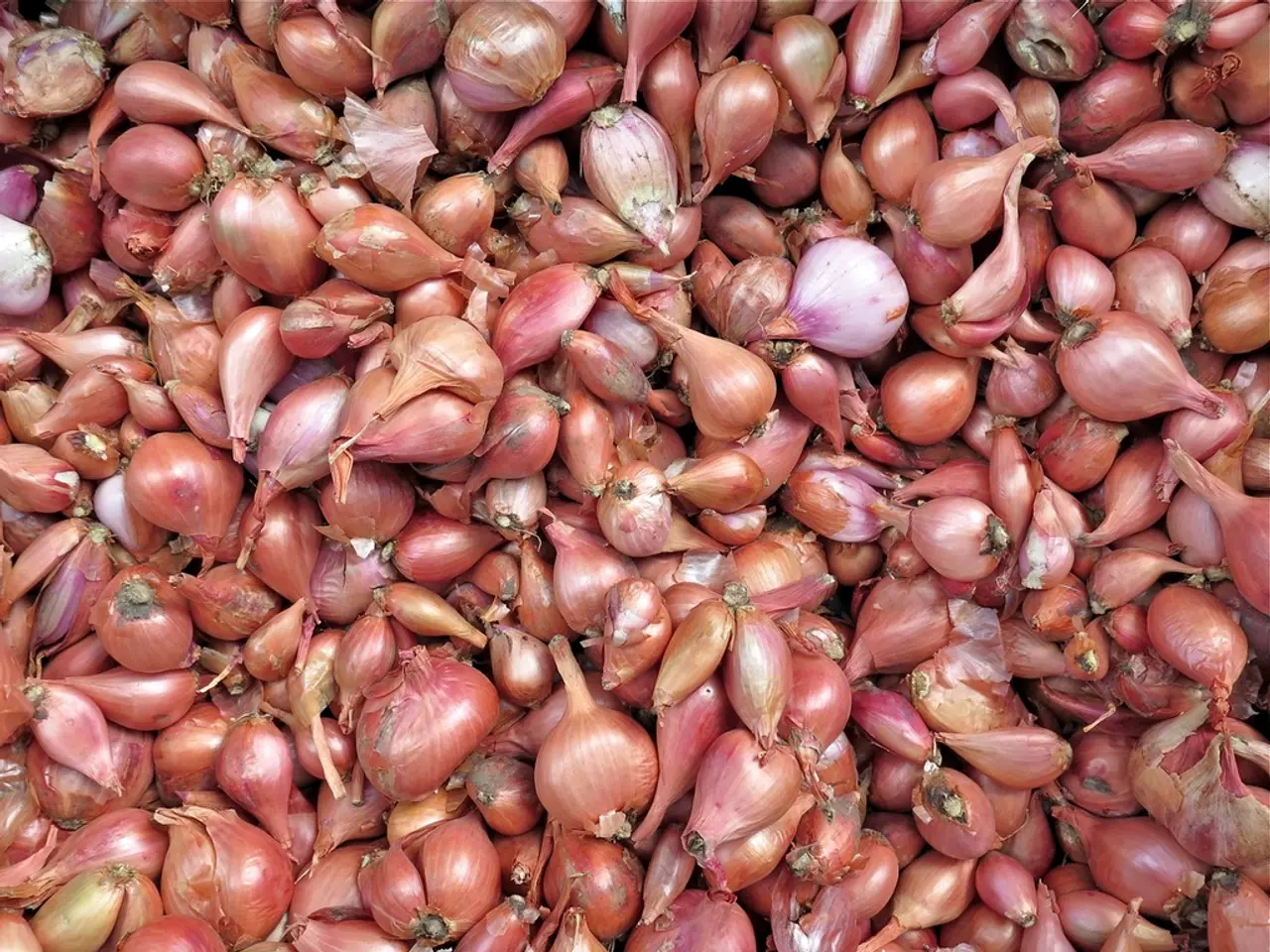Cultivating Onions in Your Backyard Garden
In the heart of the Midwest, Ohio presents an ideal environment for growing a variety of vegetables, and one of the most popular choices is the common onion (Allium cepa). Here's a guide to help you grow the best onions in your Ohio garden.
Choosing the Right Onion Cultivars
Ohio's climate is well-suited for long-day onions, which include popular cultivars such as 'Copra', 'Red Zeppelin', and 'Stuttgarter'. These onions are known for their good storage life and performance in temperate zones. Other suggested cultivars for Ohio include Early Yellow Globe, Ebenezer, White Spear, White Sweet Spanish, Candy, Sweet Sandwich, Walla Walla, Sweet-From Plants, Yellow Sweet Spanish, and Walla Walla [1].
Planting Onions in Ohio
The best time to plant onions in Ohio is either in the fall (September) or early spring. Fall planting is recommended for larger onions, while spring planting results in a shorter growing period but produces smaller bulbs. Onion sets, rather than seeds, are preferred for planting in Ohio as they establish faster and produce larger bulbs [3]. Sets should be planted 1 to 2 inches deep and 2 to 3 inches apart.
Maturity and Harvesting
The maturity of onions depends on the cultivar and planting time, but most fall-planted long-day onions mature in about 9 to 10 months, with harvest occurring by the following June. Spring-planted onions mature faster, in about 4 to 5 months, but yield smaller onions [3]. Onions are ready to harvest when the majority of the tops have wilted, approximately 90 to 120 days after planting.
Caring for Your Onion Plants
Onions have thin leaves, making weed control a challenge. Cultivation, black plastic mulch, crop rotation, and herbicides can help manage weeds. Onion transplants should be planted with 1 inch of the lower portion in the soil.
Overcoming Common Onion Diseases
Botrytis neck rot and Fusarium basal rot can affect onions in the field and storage, causing yellowing, wilting, and soft necks. These diseases can be managed through crop rotation, good soil drainage, and adequate plant spacing. Downy mildew, caused by Peronospora destructor, develops when the weather is cool and wet, causing white, almost purplish mold on onion leaves and leaf drop. Downy mildew can be managed through crop rotation, good drainage, air movement, and the use of pathogen-free sets and seeds.
Curing and Storing Onions
After harvesting, onions need to be cured to dry the cut top or neck of the bulb. This process can take two to four weeks, or until the outer scales of the bulb are papery thin. Onions should be stored in a moderately cool and dry area in ventilated containers such as a mesh bag, wire basket, or open crate.
Growing Conditions for Onions
Onions prefer soil with a pH between 6.0 and 6.8 and avoid heavy clay soils. They grow best in full sun, loose, well-drained, fertile, sandy-loam to silt-loam soils with plenty of organic matter. High soil fertility is essential for optimal onion production, with three fertilizer applications of a complete fertilizer recommended throughout the growing season.
In conclusion, with the right cultivars, planting time, and care, you can grow delicious, healthy onions in your Ohio garden. Happy gardening!
References: [1] Ohio State University Extension. (2021). Onions. Retrieved from https://ohioline.osu.edu/factsheet/hyg-fact-2000 [3] Purdue University Extension. (2021). Growing Onions. Retrieved from https://extension.purdue.edu/extmedia/BP/BP-6-W/BP-6-W.pdf
Read also:
- Wawa avian tests positive for West Nile disease
- The market for Kraft Lignin is projected to increase at a rate of 7.2% each year until 2034.
- Revising hair care practices with cynorrhodon extracts for addressing hair fragility
- Filipino Card Games Find Their Home at Gamezone, Offering an Unmatched Experience!





